
What construction project management checklist can do for you? Does it really matter? The answer depends on your level of success as an organization.
One study concluded that 98% of large construction projects are delivered late and cost nearly double what was projected. You’re not alone if you managed a construction project that went over budget.
As construction professionals, it’s up to us to take on the responsibility of making sure that projects are delivered on time and within the allocated budget. This can be accomplished by creating well-defined project plans that include checklists for each stage of project management.
The benefits of a good checklist include improved team productivity, an increased likelihood of achieving contractual objectives on time and within budget – so if you want to take your business up a notch, read on!
Download your FREE Construction Project Management Checklist Now
Enter your email to get your checklist
Some key benefits of using a construction project management checklist
Table of Contents
Getting your team together
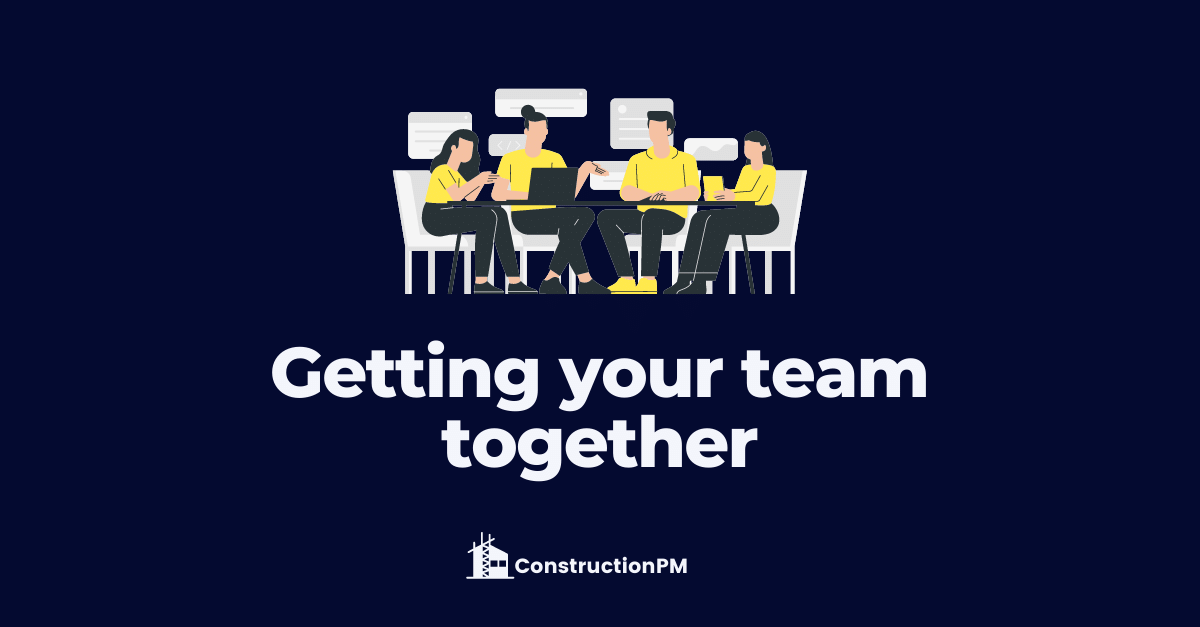
While you’re getting your team together, it’s important to make sure each person is available when they’re needed and aware of what they need to do while they’re working on your project.
Once you have a better idea of who will be doing what and when, we recommend adding their names to your task checklist—and checking them off as they complete their portion.
This will keep everyone moving smoothly through each stage without having to ask too many questions along the way. It also reduces confusion since every single member knows exactly what they should be doing right then.
Every Construction Manager Must Read Book:
- Jackson, Barbara J. (Author)
- English (Publication Language)
- 408 Pages – 04/30/2010 (Publication Date) – Sybex (Publisher)
Establishing priorities
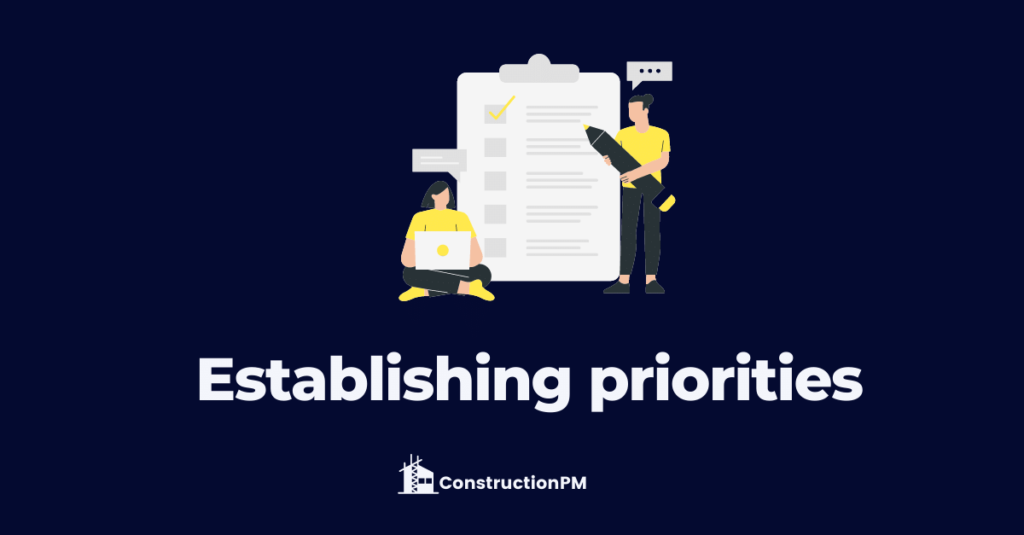
Once you’ve got your team involved, it’s time to establish priorities. A checklist can help you monitor each phase of development and keep tabs on everything that needs to get done in order to get these buildings constructed effectively and quickly.
It also helps ensure that if something falls through the cracks, everyone will know about it in a timely manner.
Must Read Book:
- Croft, Chris (Author)
- English (Publication Language)
- 364 Pages – 05/29/2022 (Publication Date) – ClydeBank Media LLC (Publisher)
Starting with the end in mind
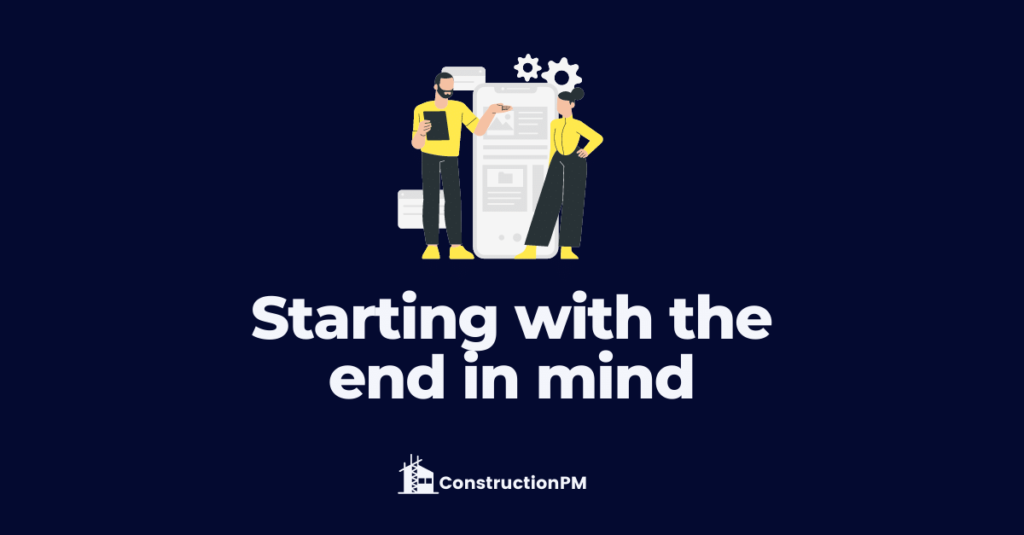
It’s easy to forget things when we’re working on a construction project. Planning is essential during every step of any job. A checklist keeps track of all your planning so that nothing falls through the cracks—and allows everyone involved to be on board with expectations throughout.
Project checklists are an especially useful tool if safety is a concern; by providing clear instructions, they reduce potential confusion over which tasks need to be completed.
To build up your first-rate construction management tools library, assemble checklists that cover every aspect of successful management from beginning to end.
Then, print them out and fill them out before getting started with any new task. From there, it’s easier to remember what needs doing—and who should do it—at each stage.
Must Read:
- Hardcover Book
- Dewar, Carolyn (Author)
- English (Publication Language)
- 384 Pages – 03/15/2022 (Publication Date) – Scribner (Publisher)
Maintaining a focus on successful completion
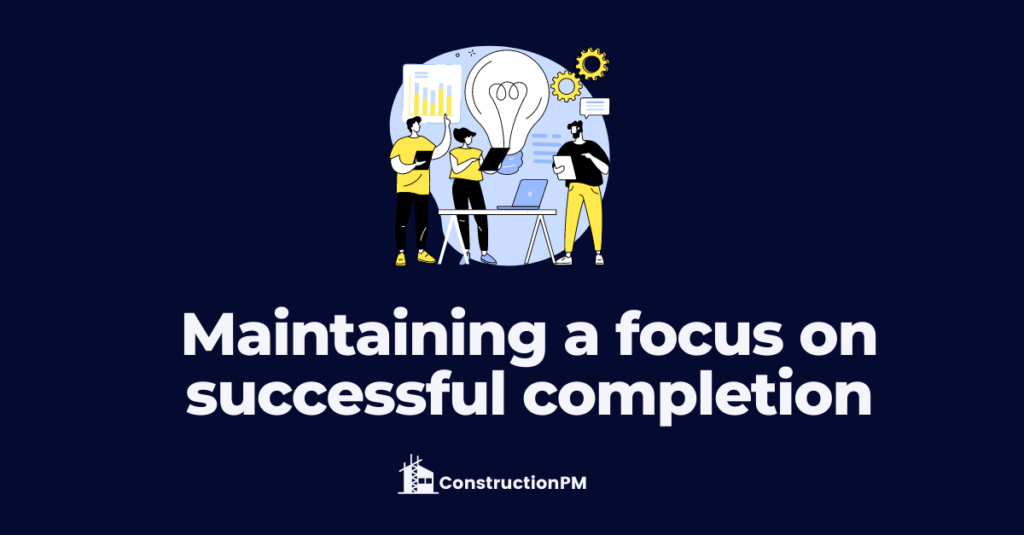
Take construction project checklists and use them to maintain a focus on successfully completing each stage of your project.
Make sure every task is completed according to schedule and delivered on time with a comprehensive checklist that you can use over and over again without having to reinvent the wheel each time you start another project.
Know when to take action
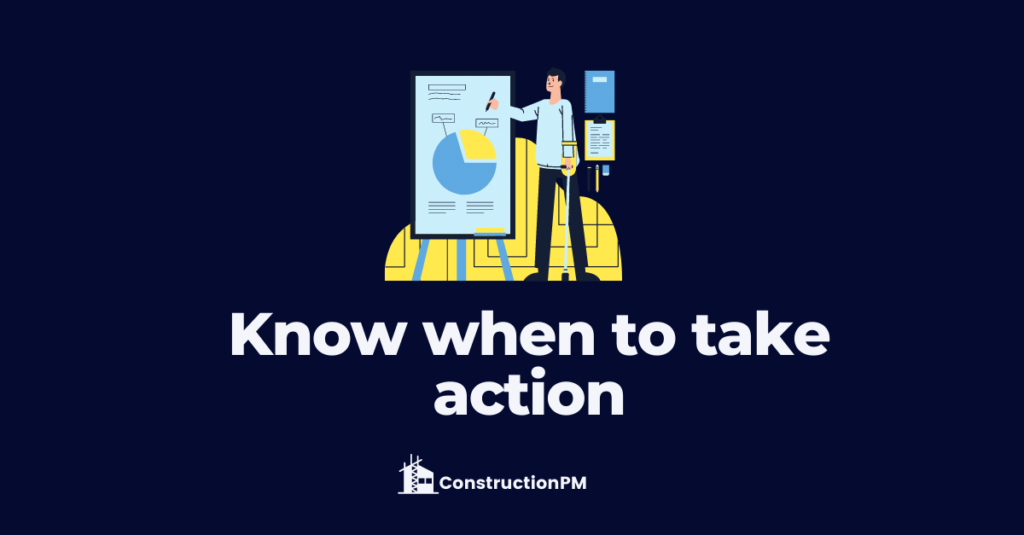
When you’re managing a construction project, it’s important to follow a plan and know when action needs to be taken. The construction checklist is your roadmap, guiding you through each stage of your building or renovation and making sure that every area of concern is addressed.
And when one phase ends and another begins, simply replace all your previous checklists with new ones from our expert-written guide.
These checklists will make sure that you don’t forget anything along the way. Build more successful projects with tailored task lists for each step of your process!
- Cartlidge, Duncan (Author)
- English (Publication Language)
- 286 Pages – 05/06/2020 (Publication Date) – Routledge (Publisher)
How many steps should your construction project management checklist have?
A checklist should have as many steps as are necessary to create a construction project success. The more steps your checklist has, it will be easier to complete projects on time and under budget as long as the steps are clear to the entire project team without any ambiguity on roles and responsibilities.
Planning the details step by step
By planning all of your project’s details ahead of time, you can be sure to give your customers what they expect without any major hiccups. Knowing where you are headed and why will keep everyone happy while you head towards construction success.
We have been busy collecting all sorts of information from professionals who seem to deliver on time and under budget when it comes to construction projects.
As an example, we created an extensive checklist that covers everything you need to do with respect to a small to mid-size construction project.
Continue reading if you’re interested in learning more about the phases of construction and what specific checklists are appropriate for each phase.
Construction Projects around the world: 5 Common Phases
Phase 1 – Initiation
Initiating a project is everything that needs to happen before a project is complete, such as determining whether or not it is the right fit, signing the necessary contracts, and implementing the steps necessary to commence with the project.
Initiation occurs during the pre-construction stage and is a step in a typical design-bid-build delivery model. When initiating a project, the typical step is to respond to a request for proposal or RFP.
However, before you spend the time, energy, and money to respond to an RFP, you need to evaluate whether or not the project would be good for your company.
These are some questions you and other company stakeholders need to ask before you bid on anything
- Would you consider the value of the project worth the investment of your time?
- Would we be a good fit for the client’s needs?
- Would our other responsibilities be too much to handle in conjunction with this project?
- Are we equipped with the supplies and materials necessary to do a good job?
To determine if you should move forward with writing a proposal, ask yourself these questions. If the answer to any of them is no, you should not go forward with this task. However, if the answer to all of them is yes, you should proceed.
The key to a winning bid is being able to do your research beforehand. To this, you should attach a breakdown of how you’ll run the project.
The overview should include a list of stakeholders and all of the tasks involved, as well as their end products. You’ll want to include risk assessment, cost estimation, and start and end dates as well.
That said, when you’ve made the winning bid, you can work out a contract. After the contract is signed, the initiation process is finished.
Let’s go over the initiation steps one more time before moving on to the remaining phases.
Project Initiation Checklist for Construction Projects
- Review Request for Proposal
- Should we give our time to this project, even if the payoff doesn’t seem great?
- Does our service fulfill your requirements?
- Would we be able to incorporate this project in between our other commitments?
- Do we have the necessary resources to complete the task?
- Create a proposal draft
- Can you define the scope of work?
- How many things will you complete in this project?
- What is the desired start date?
- What is the expected delivery date?
- Include a risk assessment in your safety training.
- Develop a strategy to mitigate the risks
- Estimate the expense for something.
- Put in a competitive bid
- Review the contract before accepting it
- What are the terms of payment?
- You’ll want to check and make sure that the terms in the proposal match the contract.
- It’s important to re-negotiate provisions that aren’t just about distributing risks equally.
- Include detailed instructions for the scenario when a change order is requested.
- Complete signing the contract
Phase 2 – Planning
Oftentimes in construction project management, the planning stages overlap with the initiation stages because planning starts before the proposal is complete.
Even though planning may stop after the proposal is accepted, the event is by no means taken care of. Specifics such as project scope, budget, quality control, and risk should be confirmed after being awarded the contract. Then you will use your bid proposal and contract agreement to make your plans.
These plans will form the basis for the activity during the construction phase of a project. They will decide who will do what and when, and break down plans for buying supplies.
Detailed Project Planning Checklist
- What does a successful project mean to you and the organization?
- How much money does the company earn
- Improving customer satisfaction
- Satisfaction of both the employee and the company
- Develop a Detailed Budget
- Remember to have an adequate contingency allowance
- Take the direct cost into account
- Include your indirect costs
- Draw a cash flow chart
- Develop a cost-controlling plan
- Develop the work breakdown structure
- Determine the extent of the project.
- Break your work into small portions and list specific deliverables
- Bring along important on-site considerations
- Develop project schedule
- Determine the critical path
- Ponder how you would stack the trades.
- Develop Risk Management Plan
- Identify project risks and their mitigations
- Assign Risks to team members for mitigations
- Establish Communication Plans
- Create a contact list containing names, jobs, and contact information.
- Specify the method(s) of communication you prefer.
- Specify how often to hold stakeholder meetings
- Have an on-site meeting at least every few months.
- Create Procurement Plans
- Vet and select suppliers and subs
- Items to order ahead of time because of the backlog and more, etc.
- Make plans for the efficient management of inventory
- Establish a Site Safety Plan
- Analyze the possible risks.
- Create a safety program for specific sites
- Define rules and actions for ensuring safety and discipline.
Phase 3 – Construction Execution
This is the construction phase of a project. In the execution stage, you’ll spend less time planning and more time ensuring plans are followed. As such, construction management follows a planning and controlling process.
Phase 4 – Monitoring and Controlling
The next stage, controlling, includes you monitoring the project’s progress. This goes hand in hand with the Execution phase. If you feel the project is not on the right track, adjust accordingly to keep the project within budget, within scope, and on time.
Project Execution and Control
- Record activities in daily logs for the purpose of balancing work and safety.
- Monitor and track changes
- Keep an eye on material usage
- Monitor personnel and visitors at the site
- Track and maintain the equipment
- Stay on top of the cash flow.
- Get client payments in on time
- Ensure subs are paid on time
- Keep track of your expenses
Phase 5 – Completion and Handover
The last stage of a construction project is everything that needs to happen to complete the work and deliver the project.
In general, this process happens once a project is at a high level of completion. Payment is required for the work to be considered complete, and so is a final review.
Detailed Project Completion and Handover Construction Management Checklist
- Complete the Punch List
- Get the final inspections completed.
- Double-check that your work complies with the terms of the contract.
- Discuss how satisfied you are with the service with the owner.
- Receive a certificate of completion
- Give me schematics, operation manuals, instructions on how to use utilities, and a set of keys.
- Send the owner an invoice for the remainder of the fees.
- All subs and vendors should be paid in full to avoid complications.
- Ensure that all rented equipment is returned in good shape.
- Review and submit a final budget report
- Be sure to file all documents for future inspection.
- Reflect on the successes and failures of the project before it is done.
FAQ’s Construction Management Checklist:
What is a Construction Management Checklist, and why is it important?
A Construction Management Checklist is a comprehensive document that outlines the tasks, activities, and milestones required to successfully plan, execute, and complete a construction project. It serves as a roadmap for project managers and teams, ensuring that all essential steps are followed. It’s crucial for keeping the project on track, within budget, and on schedule.
What should be included in a Construction Project Management Checklist?
A Construction Project Management Checklist should include a wide range of items, such as project planning, budget management, risk assessment, procurement, scheduling, quality control, safety measures, communication plans, and more. It should also specify responsibilities, deadlines, and criteria for each task or milestone.
How do I create a customized Construction Project Management Checklist for my specific project?
Creating a customized checklist involves understanding the unique requirements of your construction project. Begin by conducting a detailed project assessment and identifying the key phases, tasks, and deliverables. You can then adapt a template or use project management software to create a checklist tailored to your project’s needs.
Can I use digital tools or software to manage my Construction Project Management Checklist?
Yes, many construction project management software solutions offer checklist functionality. These tools allow you to create, update, and share checklists with your project team in real-time. This can streamline communication, enhance collaboration, and help ensure everyone is working from the same checklist.
How often should I update the Construction Project Management Checklist during a project?
The Construction Project Management Checklist should be a dynamic document that is updated as the project progresses. It’s essential to review and revise the checklist regularly to accommodate changes, adjust timelines, address unforeseen issues, and keep all stakeholders informed. Weekly or bi-weekly updates are common, but the frequency may vary based on the project’s size and complexity.
what are the steps to manage a construction project?
Managing a construction project involves a structured approach:
1. Project Initiation: Define objectives, budget, and scope.
2. Planning: Develop a comprehensive project plan, including schedules and resource allocation.
3. Team Formation: Assemble a skilled team, including contractors and subcontractors.
4. Procurement: Source materials and services, negotiating contracts.
5. Execution: Oversee construction, monitoring progress and quality.
6. Monitoring and Controlling: Continuously assess project status, addressing deviations and risks.
7. Communication: Maintain open communication with the team and stakeholders.
8. Quality Control: Ensure adherence to standards and specifications.
9. Completion and Handover: Finish construction, inspect, and deliver the project.
10. Closing: Evaluate performance, review lessons learned, and close contracts. Effective project management ensures successful, on-time, and on-budget completion of construction projects.
Conclusion
To manage and deliver a project, you need a great deal of planning and organization. We are hopeful that this construction project management checklist will help you, deliver high-quality work, on time and under budget.
You’ll Also Like:
Best Heated Jacket For Construction
Best Laptops For Construction
Best Tablets For Construction
Best Backpack For Construction Workers
Best Earbuds For Construction Workers
Best Drone For Construction
Best Construction Project Management Books










